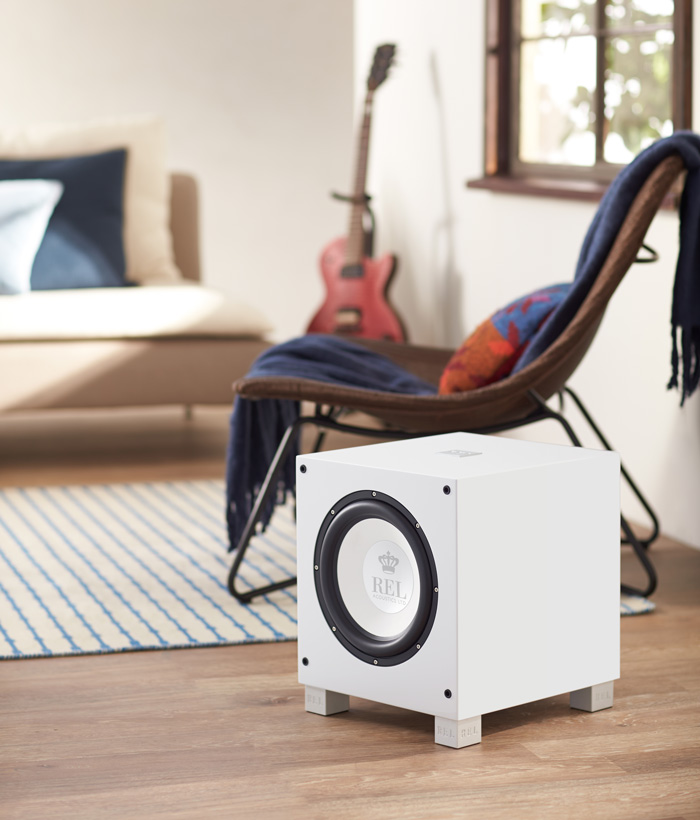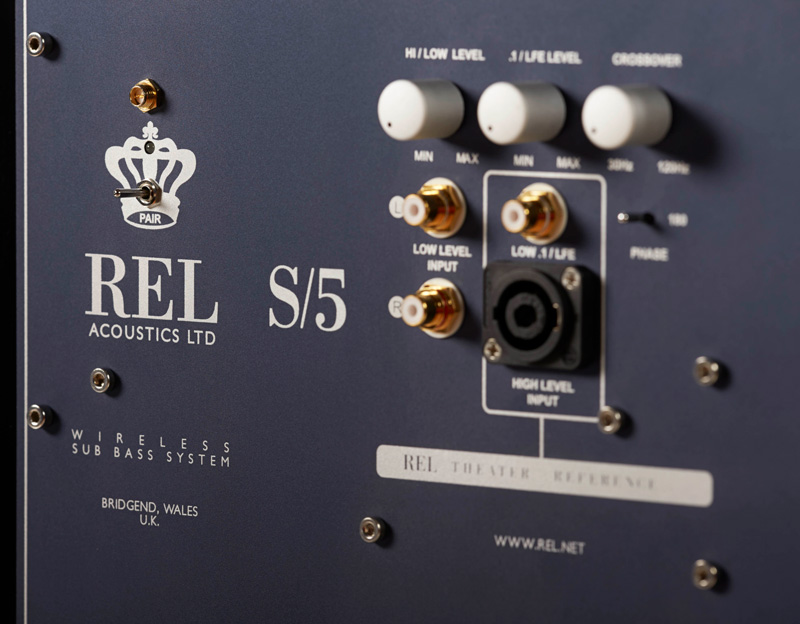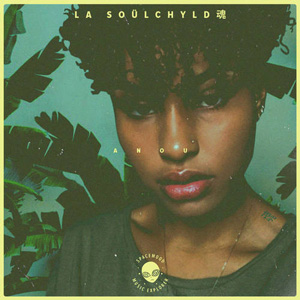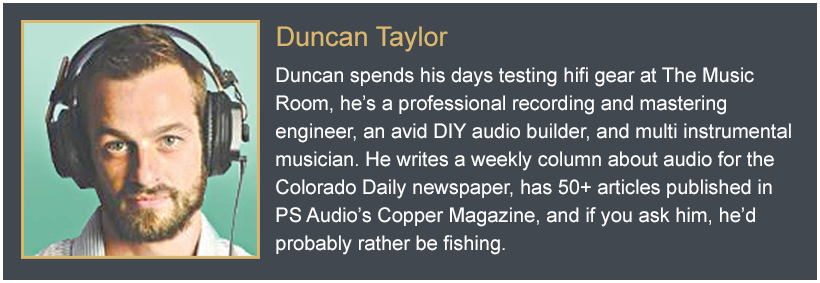Blog
Don’t Miss Out
The Importance of a Subwoofer in the Modern Musical Landscape

Plenty has been written in the audiophile annals about why one should include a subwoofer in modern home music and theater systems. I do not disagree with any of it, but I do want to bring a new perspective on why everyone should have a subwoofer.
For music, the common advice is to always use at least one subwoofer in a serious audio system, because there is much more sub-bass information in non-sub-bass-instrument recordings than you might at first believe. Transient string plucks, firm foot taps or the changing of a bow direction on a bowed instrument can produce seemingly insignificant sub bass material, but it’s there, and experience shows that we really miss it when it’s taken away.
I’ve noticed that much of the focus on subwoofer improvement by audiophiles has revolved around effectiveness with acoustic music. Whether it’s classical, jazz, chamber or world music, sounds that are captured by microphones will always benefit from a subwoofer in playback, simply because real sub bass exists in the real world.
In my view, the arguments are applicable to all kinds of music, not just acoustic music. All the same principles apply to synthesized music, perhaps even more so. Let me explain.
I hail from a generation that, for the most part, is too young to have been bitten by the audiophile bug. Most of my peers are more concerned with $120 desktop headphone amplifiers than they are a set of floor standing speakers.
I am… different. I built my first DIY speaker around age 12 or 13, which was a 9-cubic-foot dual horn subwoofer designed by Steve Deckert of Decware. I may be rare in my early journey to the depths of audiophilia, but I’m not alone in my modern music tastes among peers.
A major change is taking place in high end audio, I believe that we are entering the age of electronic audiophile music as a result of the depth of music being produced in these fields.
Yes — plenty of hifi enthusiasts have listened to plenty of electronic music, from techno to ambient and everywhere in between. This is not new. What is new is that there is more new music than ever, we have better access to it than ever, and digital production — the key of it all — is doing things we never thought possible.
The massive wave of work in computer-based audio programming and development in the past 20 years has steadily widened the bandwidth and stretched the boundaries of programs to deliver ever more complex and convincing sound. Musicians have been slowly exploring the new capabilities, and you can hear the result in new music releases every month.
The simple truth of the matter is that digital production of synthesized music has never been better than it is now.
Playback and recording systems that include well-integrated subwoofers are also more prevalent than ever, resulting in a new awakening about sub bass for modern electronic musicians and listeners alike. And companies like REL continue to push the standard of the home subwoofer higher with every new line and idea.

I’ve always found REL subwoofers to integrate most seamlessly and quickly to a pair of speakers, and I should mention that I have heard a great amount of older subwoofers over the years in my roles in the industry. Many I’d spent time with proved difficult if not impossible to truly merge with neutral main speakers, disappearing into the music. I’ve experienced the growth of the art over decades of products and approaches, and I still think new standards are being set.
So the argument I try to make about subwoofers may touch on the soundstage and realism capabilities, availability and ease of setup, but I often land on modern electronic music as a major reason to include a sub in a system.
And why not! There is a staggering amount of excellent new music being made these days. Jazz students, virtuosos and melody freaks are saddling up to the synthesizer and, armed with modern audio workstations and powerful computers, creating fascinating stereo soundscapes that plumb the depths like nothing before.
Sure, if you want to find boring electronic made by boring musicians, you can. Soundcloud is full of weekend warriors with a copy of Ableton on their MacBooks.
But, there is also amazing modern audiophile music being made all over the world, and I’ve got a few artists I’d like to share.
For music, the common advice is to always use at least one subwoofer in a serious audio system, because there is much more sub-bass information in non-sub-bass-instrument recordings than you might at first believe. Transient string plucks, firm foot taps or the changing of a bow direction on a bowed instrument can produce seemingly insignificant sub bass material, but it’s there, and experience shows that we really miss it when it’s taken away.
However, I’ve noticed that much of the focus on subwoofer improvement by audiophiles has revolved around effectiveness with acoustic music. Whether it’s classical, jazz, chamber or world music, sounds that are captured by microphones will always benefit from a subwoofer in playback, simply because real sub bass exists in the real world.
In my view, the arguments is applicable to all kinds of music, not just acoustic music. All the same principles apply to synthesized music, perhaps even more so. Let me explain.
I hail from a generation that, for the most part, is too young to have been bitten by the audiophile bug. Most of my peers are more concerned with $120 desktop headphone amplifiers than they are a set of floor standing speakers.
I am… different. I built my first DIY speaker around age 12 or 13, which was a 9-cubic-foot dual horn subwoofer designed by Steve Deckert of Decware. I may be rare in my early journey to the depths of audiophilia, but I’m not alone in my modern music tastes among peers.
A major change is taking place in high end audio, and I don’t think it has to do with DSP or any gadget. I believe we are entering the age of electronic audiophile music.
Yes — plenty of hifi enthusiasts have listened to plenty of electronic music, from techno to ambient and everywhere in between. This is not new. What is new is that there is more new music than ever, we have better access to it than ever, and digital production — the key of it all — is doing things we never thought possible.
The massive wave of work in computer-based audio programming and development in the past 20 years has steadily widened the bandwidth and stretched the boundaries of programs to deliver ever more complex and convincing sound. Musicians have been slowly exploring the new capabilities, and you can hear the result in new music releases every month.
The simple truth of the matter is that digital production of synthesized music has never been better than it is now.
Playback and recording systems that include well-integrated subwoofers are also more prevalent than ever, resulting in a new awakening about sub bass for modern electronic musicians and listeners alike. And companies like REL continue to push the standard of the home subwoofer higher with every new line and idea.
I’ve always found REL subwoofers to integrate most seamlessly and quickly to a pair of speakers, and I should mention that I have heard a great amount of older subwoofers over the years in my roles in the industry. Many I’d spent time with proved difficult if not impossible to truly merge with neutral main speakers, disappearing into the music. I’ve experienced the growth of the art over decades of products and approaches, and I still think new standards are being set.
So the argument I try to make about subwoofers may touch on the soundstage and realism capabilities, availability and ease of setup, but I often land on modern electronic music as a major reason to include a sub in a system.
And why not! There is a staggering amount of excellent new music being made these days. Jazz students, virtuosos and melody freaks are saddling up to the synthesizer and, armed with modern audio workstations and powerful computers, creating fascinating stereo soundscapes that plumb the depths like nothing before.
Sure, if you want to find boring electronic made by boring musicians, you can. Soundcloud is full of weekend warriors with a copy of Ableton on their MacBooks.

But, there is also amazing modern audiophile music being made all over the world, and I’ve got a few artists I’d like to share.
Tennyson is a Canadian duo with a merger of bouncy electronic and be-bop jazz, and is certainly deserving of high fidelity playback.
La Soülchyld is a wonderful example of excellent use of sub bass in modern production, and the same can be said for Natureboy Flako, Yosi Horikawa, Avionics and French keyboardist Anomalie, just to name a few.
As Anomalie shows, even young acoustic musicians aren’t afraid to reach for the capabilities of electronic production. See examples of this hybrid in Jacob Collier’s state-of-the-art “in the box” self-produced works, or listen to the all-star cast in R+R=NOW, led by amazing jazz pianist Robert Glasper, featuring all-star production that really gets the sub moving.
Listening to “Don’t Go” by La Soülchyld without a subwoofer in the system would be like trying to find your way around an unfamiliar building wearing a welding mask. This isn’t about enhancing the soundstage — it’s about hearing all of the notes that the musician played.
A subwoofer is not a gimmick or tool for boom. It’s an essential part of the whole experience, in every genre; today more than ever.











